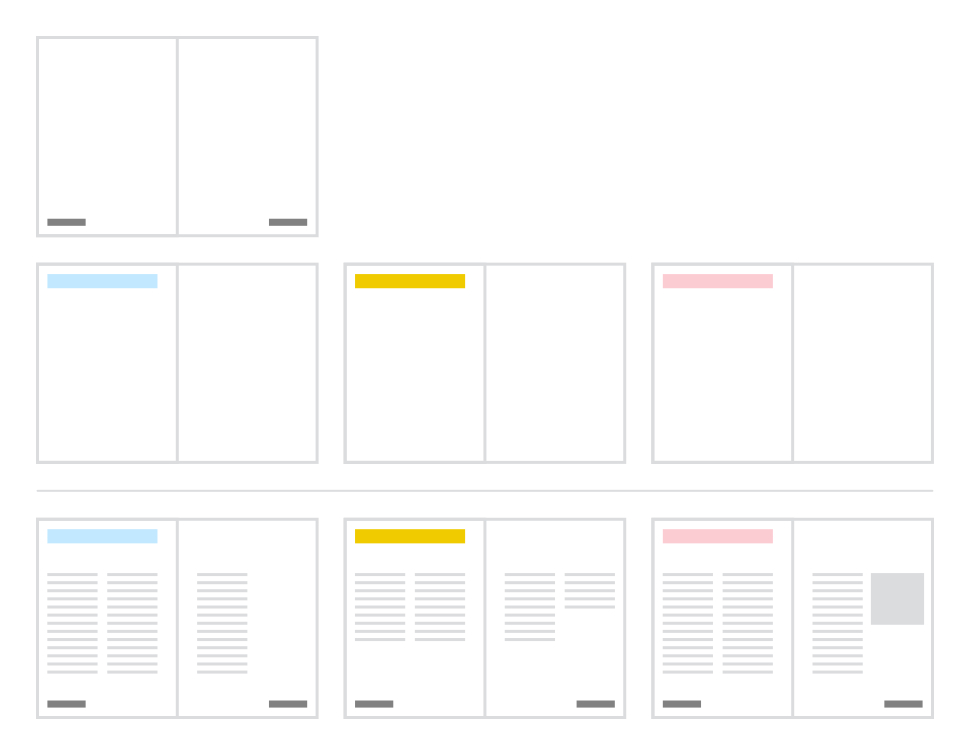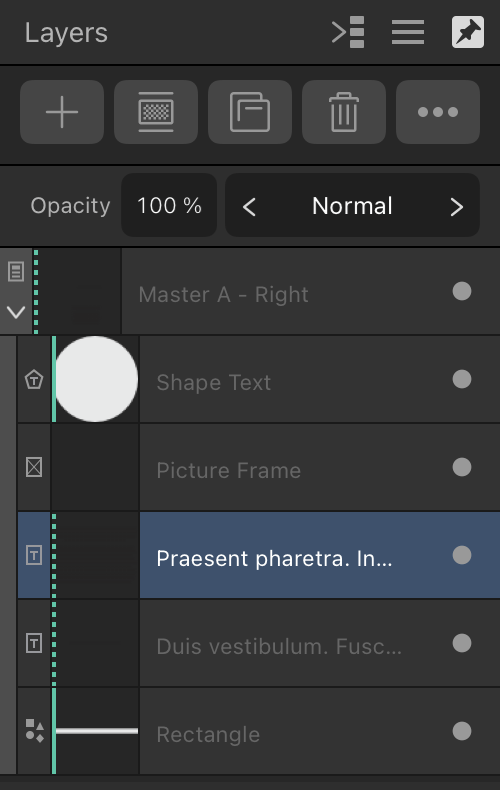Initial master page
When creating a new document, a default master can be created and applied to all publication pages created at this time. After this, you can apply any new master at any time using the Pages panel.
Using multiple hierarchical masters
Masters can be applied to other masters in more complex documents.
For example, a 'parent' master containing just page numbering could be applied to multiple 'child' masters coloured separately for each of your publication's sections. This means that to change your page numbering style, you only need to do so on the parent master.
Also, as you create new publication pages, applying a child master to them adds the section colouring and automatically inherits page numbering from its parent.

Masters as layers
An applied master is actually a layer, which shows on the Layers panel as a vertical solid turquoise marker prefixing the thumbnail on the layer entry.
The layer can be expanded to expose the elements inherited from the master, which display vertical solid turquoise markers on their entries.

When an element of a master page is edited on a page where it's applied, that page's layer entries for the element and its master page display dotted turquoise markers.
By dragging a master's layer to the top of the layer stack, you can present the master's items in front of all other items on the page.
By selecting the master page's layer entry, the inherited content can be collectively transformed. Individual objects can only be transformed by detaching the master page. The content of text objects and picture frames can be edited, though.
To prevent inadvertent transformation or editing of inherited content (other than text/picture frame content), select and then lock the master layer on the Layers panel.
Master placement
You can manage how a master is applied in the Master Placement section of its layer options, where you can specify:
- which pages of the master are applied (Master Start Page and Page Count).
- from which of the spread's publication pages to apply the master's pages (First Applied Page).
- the scaling behaviour that is applied to the master's content, where page dimensions are different, whether line styles scale accordingly, and the position at which the master is anchored to destination page.
The following scaling behaviours are available:
- None—places the master at its original size.
- Stretch—stretches the master to fill the destination exactly. It may be noticeably distorted, depending on its relative proportions and those of the destination.
- Uniform to Fit—scales the master uniformly to be completely visible within the page. There may be empty areas down the left and right or across the top and bottom of the page.
- Uniform to Fill—scales the master uniformly to fill the entire page without distorting it. Some of its contents may be cropped.